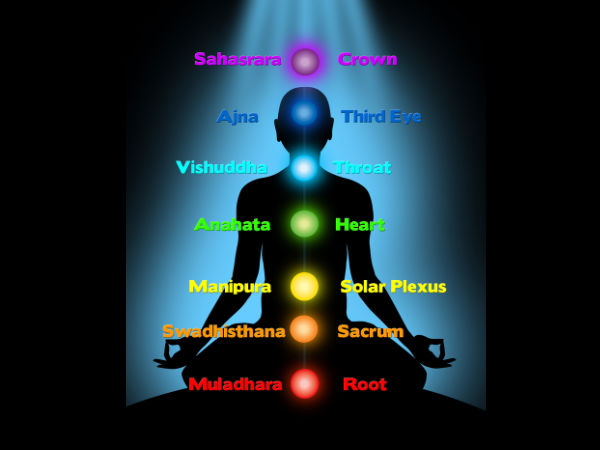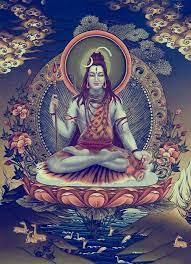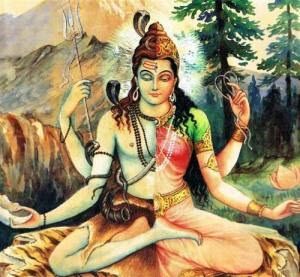How Kundalini and Tantra Yoga are Related
Kundalini and Tantra yoga are two closely related practices that originate from ancient India. While both of these practices have their unique principles and techniques, they are closely intertwined, and their goals and benefits overlap.
Table of Contents
What is Kundalini Yoga?
Kundalini yoga is a spiritual practice that aims to awaken the dormant energy at the base of the spine, known as Kundalini. Kundalini is often depicted as a coiled serpent, and when awakened, it rises up through the chakras, or energy centers, along the spine, leading to a state of higher consciousness and spiritual awakening.

Kundalini yoga involves a combination of physical postures, breathing techniques, meditation, chanting, and other spiritual practices that are designed to activate and balance the energy of the body and mind. It is said that Kundalini yoga can bring about profound physical, emotional, and spiritual transformation.
What is Tantra Yoga?
Tantra yoga is another ancient practice that aims to unite the individual with the universal consciousness, also known as the divine or the ultimate reality. Tantra is often associated with sexual practices, but this is just one aspect of the vast system of practices that make up Tantra yoga.
Tantra yoga is based on the principle that everything in the universe, including the human body, is a manifestation of the divine energy, known as Shakti. Tantra seeks to harness this divine energy to achieve spiritual liberation and enlightenment.
Tantra yoga involves a combination of physical postures, breathing techniques, meditation, visualization, mantra, and ritual practices that are designed to awaken the divine energy within and connect with the universal consciousness.
The Mystical Bond Between Kundalini and Tantra Yoga
Kundalini and Tantra yoga are closely related in that both practices aim to awaken the dormant energy within the body and mind and connect the individual with the universal consciousness. They both use a combination of physical postures, breathing techniques, meditation, and other spiritual practices to achieve their goals.
In Kundalini yoga, the focus is on awakening the Kundalini energy at the base of the spine and allowing it to rise up through the chakras to achieve spiritual enlightenment. In Tantra yoga, the focus is on awakening the divine energy within and uniting it with the universal consciousness.
Tantra yoga recognizes the Kundalini energy as a powerful force that can be harnessed to achieve spiritual transformation. The practices of Tantra yoga are designed to activate and balance the energy of the body and mind, allowing the individual to connect with the universal consciousness.
In both Kundalini and Tantra yoga, physical postures, breathing techniques, and other practices are used to activate the energy centers of the body and create a free flow of energy throughout the body and mind. This free flow of energy is said to lead to increased awareness, inner peace, and mental stability.
Understanding the Energy Body in Tantra Yoga
Both Kundalini and Tantra yoga recognize the importance of the energy body in spiritual growth and transformation. Kundalini yoga specifically focuses on the awakening and activation of Kundalini energy, while Tantra yoga views the body as a microcosm of the universe and seeks to harmonize the individual’s energy with the cosmic energy.

In both practices, the body is viewed as an interconnected system of energy channels, or nadis, and energy centers, or chakras. The nadis and chakras are responsible for the flow of energy in the body, and they play a crucial role in physical, emotional, and spiritual well-being. Kundalini and Tantra yoga both use practices such as asanas, pranayama, and meditation to activate and balance these energy channels, allowing for the free flow of energy throughout the body.
The Role of Meditation
Meditation is a key component of both Kundalini and Tantra yoga. In Kundalini yoga, meditation is used to help focus the mind and connect with the energy of the universe. Through meditation, practitioners can awaken Kundalini’s energy and direct it upward through the chakras, leading to spiritual transformation and enlightenment.
In Tantra yoga, meditation is used as a tool for self-inquiry and self-realization. Through the practice of meditation, practitioners can gain insight into their true nature and achieve a state of unity with the divine. Tantra yoga views meditation as a way to access the divine energy that is present within every individual, and it is through this practice that one can experience the ultimate goal of Tantra yoga: union with the divine.
The Importance of Breath
Breathwork, or pranayama, is an integral part of both Kundalini and Tantra yoga. In Kundalini yoga, pranayama is used to awaken and activate Kundalini energy, while in Tantra yoga, it is used to balance and harmonize the energy body.
Both practices recognize the importance of conscious breathing in achieving a state of higher consciousness. Through the practice of pranayama, practitioners can increase the flow of vital energy in the body, leading to greater physical and emotional well-being. Pranayama is also used to help focus the mind and prepare the body for meditation.
The Use of Mantra
Mantra is a powerful tool used in both Kundalini and Tantra yoga to connect with the divine and transform the energy body. In both practices, mantra is viewed as a sacred sound or vibration that can have a profound impact on the mind, body, and spirit.
Kundalini Yoga and Mantra
In Kundalini yoga, mantras are used to activate Kundalini energy and direct it upward through the chakras. Mantra is believed to have a powerful effect on the mind and can help to focus the mind and deepen one’s meditation practice.
Aum Namo Guru Dev Namo mantra
One of the most commonly used mantras in Kundalini yoga is the Adi Mantra, also known as the Aum Namo Guru Dev Namo mantra. This mantra is used to connect with the divine and set the intention for the practice. It is chanted three times at the beginning of a Kundalini yoga class to create a sacred space and establish a connection with the teacher and other practitioners.
Another powerful mantra used in Kundalini yoga is the Sat Nam mantra, which means “truth is my identity.” This mantra is often used in meditation and is believed to help awaken the Kundalini energy at the base of the spine.
Tantra Yoga and Mantra
In Tantra yoga, mantra is used to connect with the divine and harmonize the energy body. Mantra is viewed as a way to access the cosmic energy that is present within every individual and to bring that energy into balance and harmony.
In Tantra yoga, the use of mantra is often combined with other practices, such as asana, pranayama, and meditation. Mantra is used to help focus the mind and deepen the practice, and it is believed to have a transformative effect on the energy body.

One of the most commonly used mantras in Tantra yoga is the Om or AUM mantra, which is believed to be the sound of the universe. This mantra is often chanted at the beginning and end of a practice to create a connection with the divine and to bring the energy of the practice into alignment with the cosmic energy.
Another powerful mantra used in Tantra yoga is the Hare Krishna mantra, which is a Sanskrit chant that is believed to connect the practitioner with the divine energy of Krishna. This mantra is often used in kirtan, a devotional practice that involves singing and chanting in a group setting.
Benefits of Mantra in Kundalini and Tantra Yoga
The use of mantras in Kundalini and Tantra yoga can have a profound impact on the mind, body, and spirit. Some of the benefits of mantra include:
- Focusing the mind: Mantra can help to quiet the mind and focus the attention on a specific intention or goal.
- Deepening the practice: Mantra can help to deepen the practice of meditation, asana, or pranayama, allowing the practitioner to access deeper states of consciousness.
- Transforming the energy body: Mantra can have a transformative effect on the energy body, helping to activate and balance the chakras and awaken Kundalini energy.
- Connecting with the divine: Mantra can be a powerful tool for connecting with the divine and accessing the cosmic energy that is present within every individual.
Why is Kundalini Yoga So Powerful?
Kundalini yoga is considered a powerful practice because it works directly with the Kundalini energy, which is believed to be the dormant energy coiled up at the base of the spine. This energy, when awakened, is said to have transformative effects on the mind, body, and spirit, leading to greater levels of awareness, spiritual growth, and personal transformation.

Here are some reasons why Kundalini yoga is considered a powerful practice:
- Activating Kundalini Energy: Kundalini yoga is designed to activate the dormant Kundalini energy and move it upward through the chakras, which are energy centers located along the spine. When the Kundalini energy is awakened, it can lead to profound experiences of spiritual awakening and personal transformation.
- Accessing Higher States of Consciousness: Kundalini yoga is designed to help practitioners access higher states of consciousness, which can lead to increased levels of awareness, creativity, and intuition. Kundalini yoga practices, such as meditation and pranayama, are specifically designed to activate the pineal gland, which is responsible for producing hormones that regulate sleep, mood, and consciousness.
- Balancing the Energy Body: Kundalini yoga is also designed to balance the energy body, which can lead to greater physical, emotional, and mental well-being. The practice of Kundalini yoga includes a variety of postures, breathing techniques, and meditation practices that work together to activate and balance the chakras, leading to greater levels of health and vitality.
- Releasing Emotional Blockages: Kundalini yoga is believed to help release emotional blockages that are stored in the energy body, leading to greater levels of emotional and mental clarity. The practice of Kundalini yoga includes practices such as Kriya, which are sets of exercises and meditations designed to target specific areas of the body and energy system.
- Strengthening the Nervous System: Kundalini yoga is also believed to help strengthen the nervous system, leading to greater levels of resilience and stress tolerance. The practice of Kundalini yoga includes practices such as deep relaxation, which can help to release stress and tension from the body and mind.
Who is the God of Kundalini yoga and tantra yoga?
In Kundalini yoga and Tantra yoga, there is not a single God or deity that is considered to be the ultimate authority. Instead, these practices recognize and honor the divine energy that exists within all beings, including the practitioner.
Kundalini yoga and Tantra yoga are rooted in the belief that the universe is made up of divine energy as Ardhanariswara or ShivaShakti, which is both masculine and feminine in nature. This divine energy is seen as the creative force that underlies all of existence and is believed to be present within all beings.

In Kundalini yoga, the Kundalini energy is considered to be the feminine aspect of this divine energy, while in Tantra yoga, it is often associated with the practices of Shiva and Shakti. However, these practices do not worship any specific deity or God in the traditional sense but rather seek to connect with and honor the divine energy that exists within all beings.
In some lineages of Tantra, specific deities or forms of the divine are honored and invoked, such as Kali, or Shiva. However, these deities are not seen as separate from the practitioner, but rather as aspects of the same divine energy that exists within all beings.
The God or deity of Kundalini yoga and Tantra yoga in a deeper context single entity, but rather the divine energy that underlies all of existence, which is honored and invoked in various ways throughout these practices.
Is Tantra the Practice of Kundalini Awakening?
While Kundalini awakening is a central practice in Tantra, Tantra is not solely focused on Kundalini awakening. Tantra is a diverse spiritual tradition that encompasses a wide range of practices, including meditation, ritual, yoga, mantra, and more.
The word Tantra comes from the Sanskrit root “tan” which means “to weave” or “to expand”. Tantra is often described as a path of expansion, which seeks to integrate all aspects of life, including the spiritual, sexual, and material dimensions.
spiritual growth and transformation in Kundalini and tantra yoga
Kundalini awakening is one of the practices within Tantra that is designed to facilitate spiritual growth and transformation. Kundalini is the dormant energy that is said to reside at the base of the spine, and the goal of Kundalini awakening is to awaken this energy and move it upward through the chakras, which are energy centers located along the spine.
Conclusion
Tantra uses a variety of practices to facilitate Kundalini awakening, including yoga, pranayama, mantra, meditation, and ritual. However, Kundalini awakening is not the only goal of Tantra, as the practices of Tantra are designed to facilitate greater levels of awareness, personal transformation, and spiritual growth, in all aspects of life.
Kundalini awakening is an important practice within Tantra, it is just one aspect of this diverse spiritual tradition that encompasses a wide range of practices and teachings aimed at facilitating spiritual growth and personal transformation.
Reference
https://www.ncbi.nlm.nih.gov/pmc/articles/PMC9460011/
https://pubmed.ncbi.nlm.nih.gov/33360561/
https://www.ncbi.nlm.nih.gov/pmc/articles/PMC9282169/
